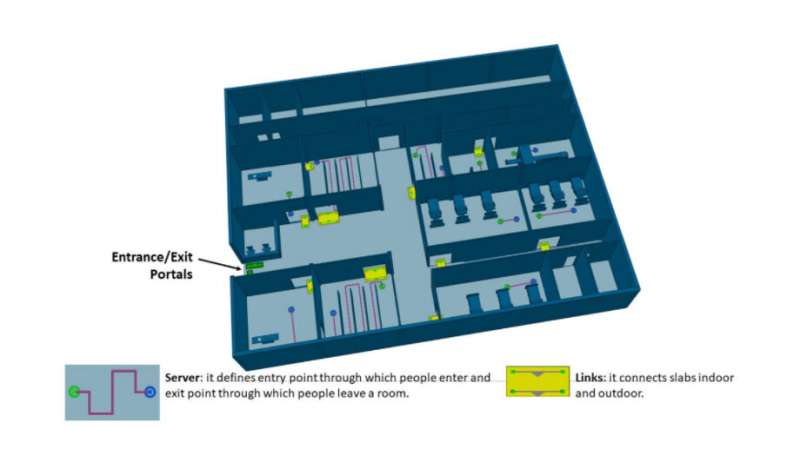
Computer simulations showing how patients and staff move around inside hospitals are helping civil engineers make modifications to help control the transmission of COVID-19.
Similar visualizations could also help schools, offices and care homes lower the risk of infection spread, not just from COVID-19, but from other contagions like Ebola and future viruses.
Brunel University London’s modeling highlights how tweaks to entrances and exits, where machines are put and where people interact can make public places more disease-resilient.
“This work helps assess the efficacy of non-pharmaceutical interventions such as social distancing under a virtual hospital built environment, and this paves the way for the development of more resilient healthcare and residential care facilities,” said Dr. Kangkang Tang.
“There will be more new viruses and their transmission characteristics could be more complicated than SARS-CoV-2,” said Dr. Tang. “It is important to design hospital buildings not following the fear of infection, but for changes or the ability to cope better with future challenges.”
Between a seventh and a fifth of UK COVID-19 patients and the majority of infected healthcare workers caught the disease in hospitals. During the SARS-CoV outbreak in 2003, more than 20% of the confirmed cases were caught in healthcare settings, including most of the frontline healthcare staff.
https://youtube.com/watch?v=MuP6KXyx74U%3Fcolor%3Dwhite
Climate change creates better conditions for the transmission of zoonotic diseases. And while the UK ‘annual flu program’ is regularly tested and updated to ensure flu vaccine supply will meet demands, hospital design blueprints haven’t kept pace. Reviewing and updating hospital design procedures in the same way is vital to tackle the growing danger of infection and other fresh challenges, engineers urge.
Brunel’s complex spatially-explicit stochastic simulations examine real-life hospital built environments, to rehearse future pandemics. To literally build in resilience—with modifications like modular construction, lightweight removable external walls, and extra internal partitions, entrances and exits—is key to making hospital space flexible enough to better respond to the unknown.
“There is a pressing need to develop more resilient hospital built-environments to protect the health and safety of patients and healthcare workers,” said Dr. Tang, keen now to work with industry to build more precise models. “Design for healthcare resilience can be achieved by keeping the flexibility of space for the future, and this will be further enhanced with modular construction and prefabrication using lightweight steel.”
Source: Read Full Article
